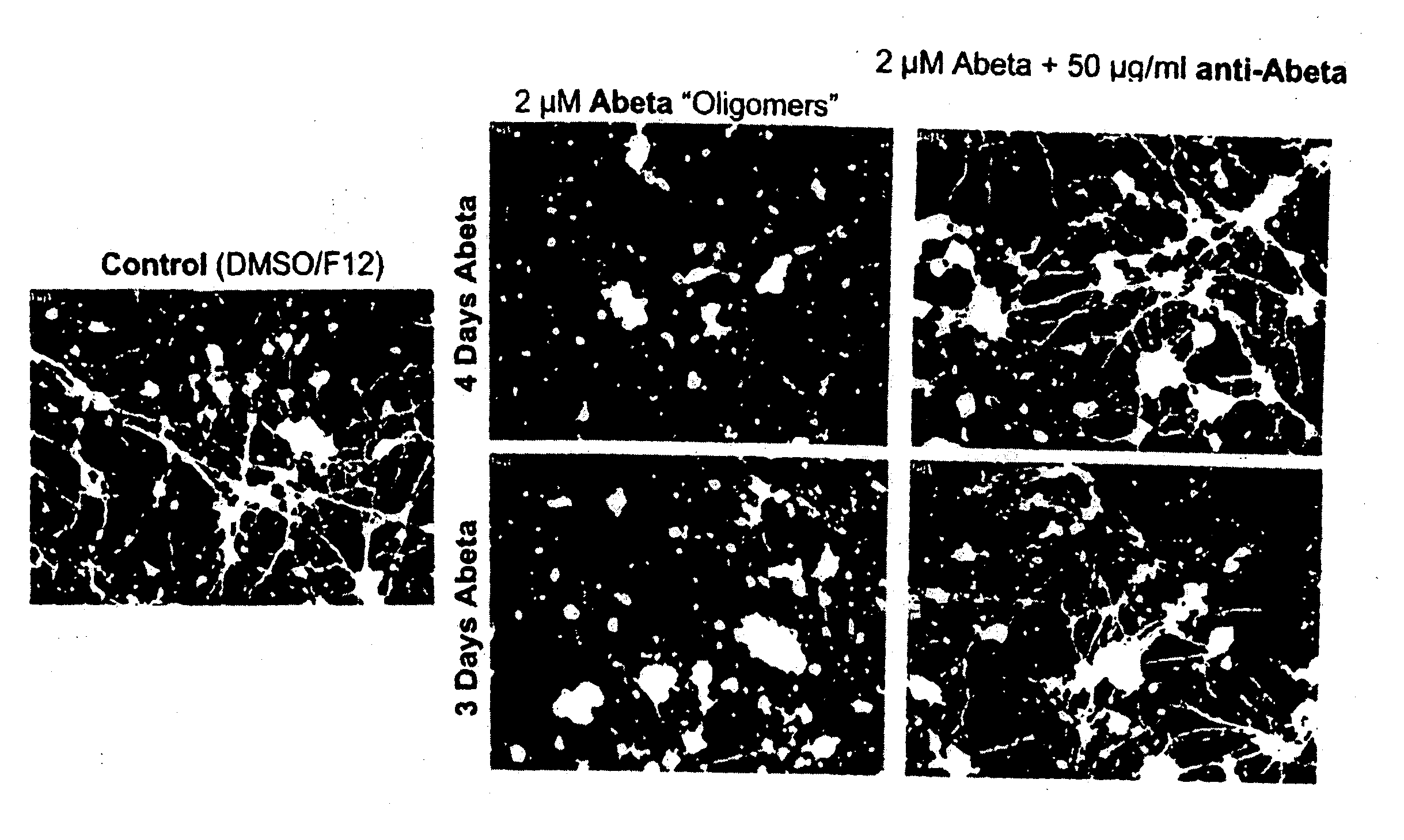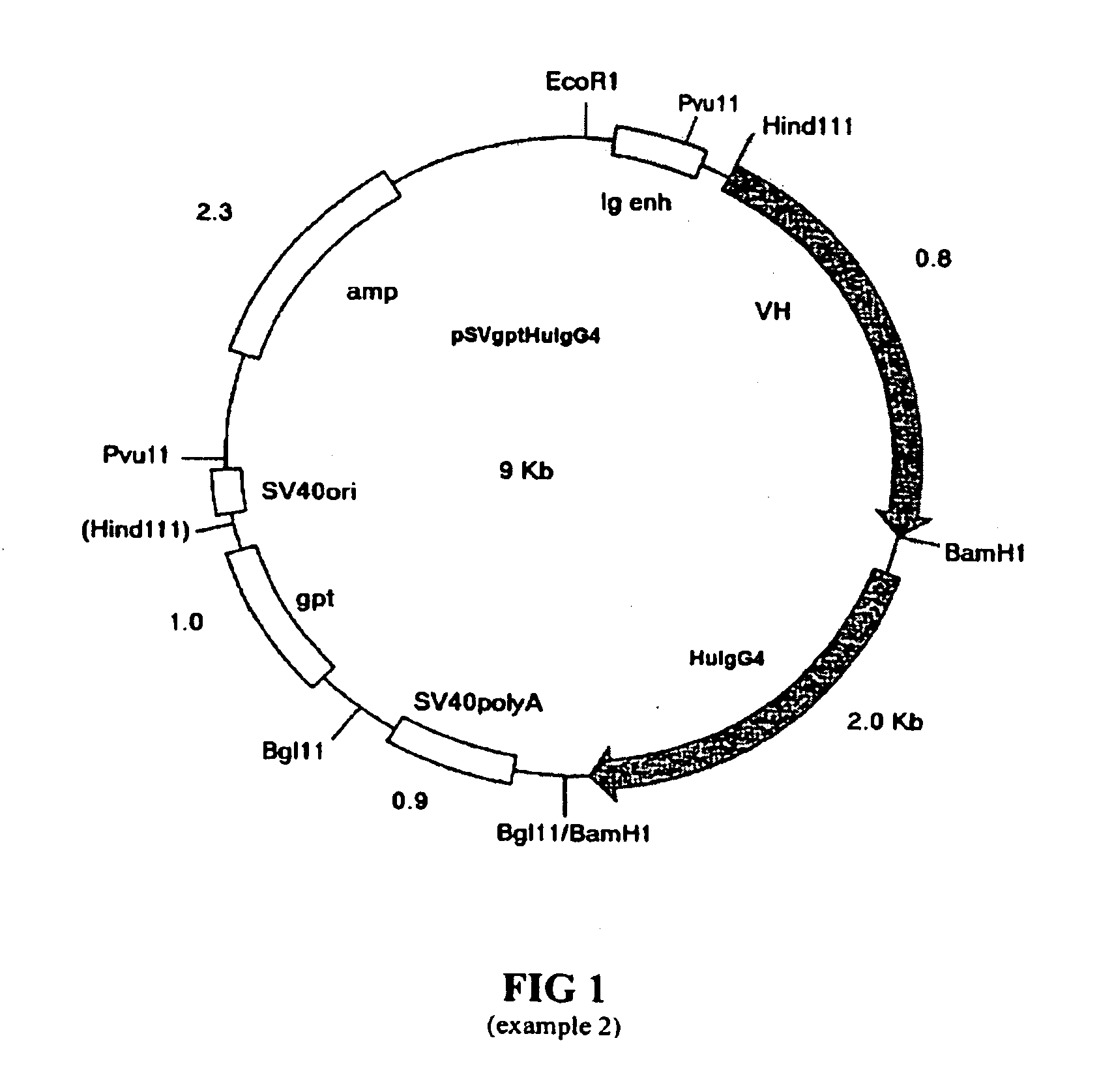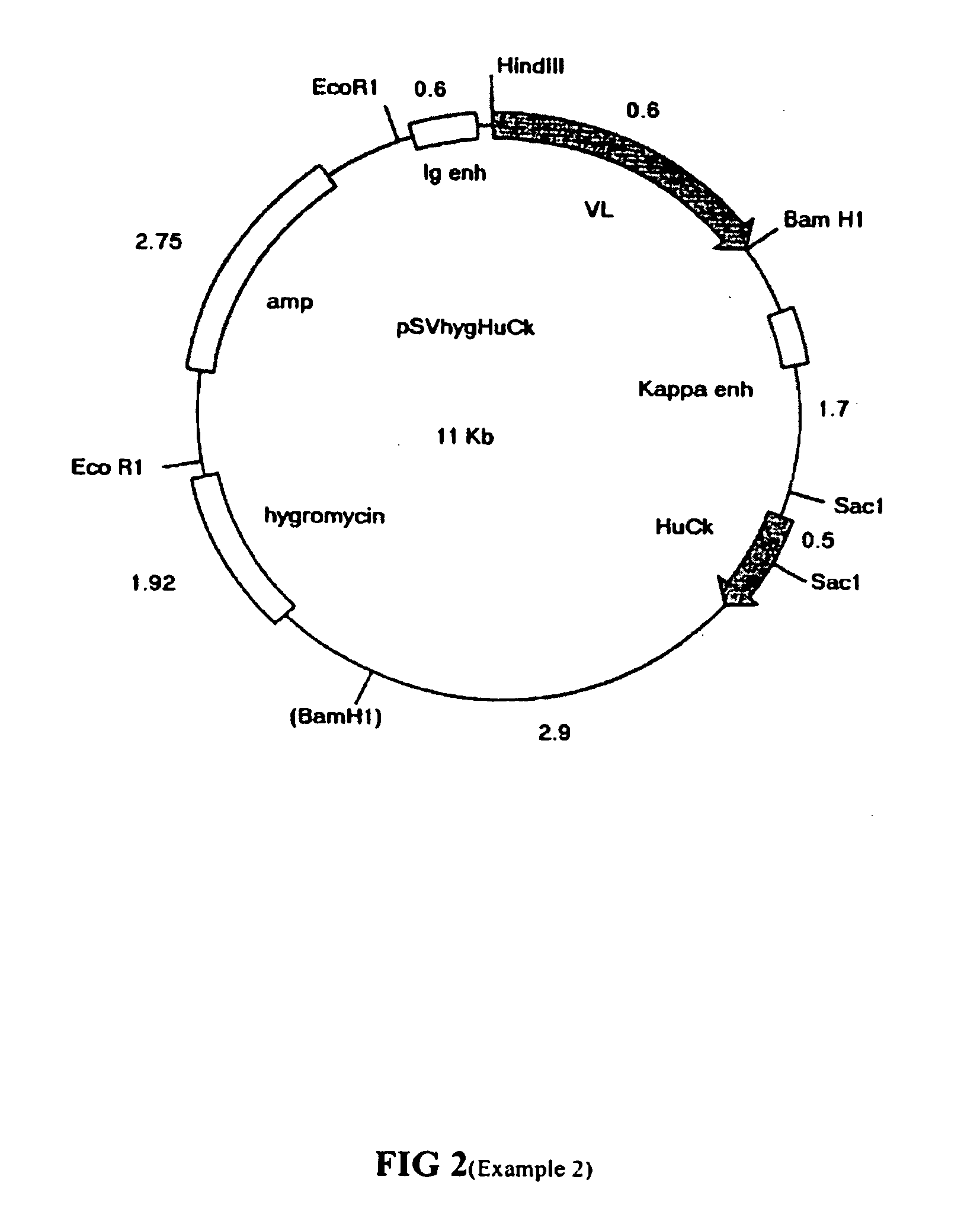Humanized antibody igg1
- Summary
- Abstract
- Description
- Claims
- Application Information
AI Technical Summary
Benefits of technology
Problems solved by technology
Method used
Image
Examples
example 1
Cloning and Sequencing of Antibody Variable Regions
[0525]Total RNA was prepared from 3×106 hybridoma cells (one T175 flask) using the Qiagen RNeasy mini kit (Cat No: 74104). RNA was eluted in 50 μL water and checked on a 1.2% agarose gel. The conditioned medium from the cells was retained and a sample used for testing in the antibody activity assay.
[0526]VH and VK cDNAs were prepared using reverse transcriptase with mouse IgG and κ constant region primers. The first strand cDNAs were amplified by PCR using a large set of signal sequence primers. The amplified DNAs were gel-purified and cloned into the vector pGem® T Easy (Promega). The VH and VK clones obtained were screened for inserts of the expected size by PCR and the DNA sequence of selected clones determined by automated DNA sequencing. The locations of the complementarity determining regions (CDRs) in the sequences were determined with reference to other antibody sequences (Kabat E A et al., 1991). The numbering convention of...
example 2
Construction of Chimeric Antibody Genes
[0530]A human chimeric antibody in its most common form consists of human constant regions linked to murine (or other non-human) variable regions. A chimeric antibody provides a very useful tool, firstly for confirmation that the correct variable regions have been identified, secondly for use as a control antibody in antigen binding assays with the same effector functions and utilizing the same secondary detection reagents as a humanized or engineered antibody, and also may be used to investigate the pharmacokinetic and other properties of the human constant regions with reference to the particular target for the antibody.
[0531]Two chimeric heavy chain expression vectors were constructed consisting of mC2 VH AF or mC2 VH B variable regions linked to HuIgG4 (Ser-Pro) constant region in the expression vector pSVgpt (FIG. 1). This is based on pSV2gpt (Mulligan and Berg, 1980) and includes the ampicillin resistance gene for selection in bacterial c...
example 3
Expression of Chimeric Antibodies
3.1 Expression in Stable Cell Lines
[0534]The host cell line for antibody expression was NS0, a non-immunoglobulin producing mouse myeloma, obtained from the European Collection of Animal Cell Cultures, Porton UK (ECACC No 85110503). The heavy and light chain expression vectors were co-transfected into NS0 cells by electroporation. Colonies expressing the gpt gene were selected in Dulbecco's Modified Eagle's Medium (DMEM) supplemented with 10% foetal bovine serum (FBS), 0.8 μg / ml mycophenolic acid and 250 μg / ml xanthine. Transfected cell clones were screened for production of human antibody by ELISA for human IgG. Cell lines secreting antibody were expanded and the highest producers selected and frozen down in liquid nitrogen. The best producing cell lines for each antibody were expanded in medium as above but with only 5% FBS. Chimeric antibodies were purified using Prosep®-A (Bioprocessing Ltd). The concentration was determined by ELISA for human Ig...
PUM
| Property | Measurement | Unit |
|---|---|---|
| Fraction | aaaaa | aaaaa |
| Fraction | aaaaa | aaaaa |
| Fraction | aaaaa | aaaaa |
Abstract
Description
Claims
Application Information
 Login to View More
Login to View More - R&D
- Intellectual Property
- Life Sciences
- Materials
- Tech Scout
- Unparalleled Data Quality
- Higher Quality Content
- 60% Fewer Hallucinations
Browse by: Latest US Patents, China's latest patents, Technical Efficacy Thesaurus, Application Domain, Technology Topic, Popular Technical Reports.
© 2025 PatSnap. All rights reserved.Legal|Privacy policy|Modern Slavery Act Transparency Statement|Sitemap|About US| Contact US: help@patsnap.com



